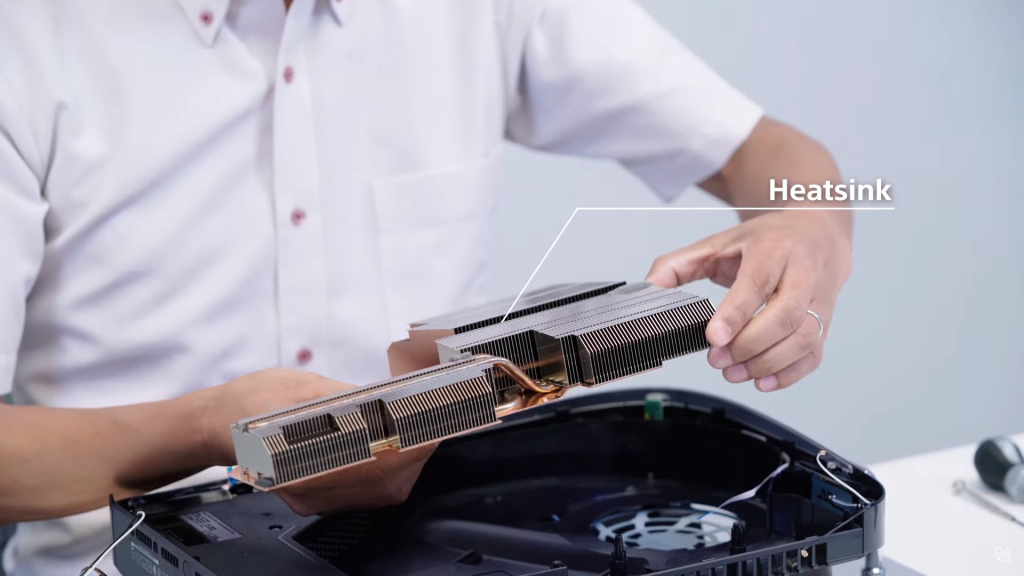There’s a new PS5 model that revises some of internal components of the console. This is the same lighter PS5 console that was reported on earlier this year, and a YouTuber named Austin Evans tore the console apart to find out what exactly was different. His video, titled, “The New PS5 is Worse” with a grimacing face emoji, set a lot of speculation going around that the new PS5 is worse, but GamesBeat’s Jeff Grubb has stepped in to correct some misinformation going around about the new console. It might be built a little bit differently, but going as far as to call it “worse” is speculating on untested performance that doesn’t make sense within console design.
The new PS5—which is now for sale in Japan and Australia—uses a different base with a wider channel and a screw that you can tighten and loosen just with your fingers, but otherwise, the differences were unknown, specifically around why it’s more than half a pound lighter. Evans’ video, however, discovered that the new PS5 model has a reduced heatsink and different fan, which accounts for the weight differences and also makes the revised console run slightly hotter than the original, by about 6-9 degrees F. Evans claims that the console running hotter makes it “worse,” but Grubb refutes this claim, saying that if it runs the same games with the same performance, the temperature it runs at doesn’t actually matter. In fact, Grubb estimates that this actually means that the cooling system on the original PS5 model was overengineered and cooled more than it needed to.
The company shipped the console with a massive heatsink. It really is a behemoth of twisting, turning metal. And I suspected from the beginning that the company settled on that design out of an abundance of caution rather than because it was strictly necessary. And now, with months of real-world results, Sony is refining its PS5 device to save money and materials.
Additionally, Grubb notes that the smaller heatsink means each console uses less of the expensive and difficult-to-source copper, which is ultimately better for the supply chain. And if the original was excessive to begin with, then the new one isn’t “worse” just because it eliminates some of that abundant margin of error. Ironically, Evans even states at one point in the video that it looks like they “over-engineered” the launch model and admits that Sony may have come to the conclusion that the margin of error is fin and won’t impact performance. Much of Evans’ speculative fears about the smaller heatsink and hotter temperatures is just that: speculation and assumption.
Elsewhere on Twitter, Grubb also noted a few other points. One of the biggest ones is conflating discussions about building custom PCs with discussions about engineering a console. The difference is that one is highly customizable while the other is engineered from the get-go for static design and performance. While a difference of a few degrees could make a difference in PC performance with a custom build, the same isn’t true of a specifically engineered and designed console. Others have argued that the console putting out a higher temperature at the vents technically means that it’s dissipating more heat, since none of the other internal components changed and it should feasibly be operating the same internally. This point is debatable, but it’s a valid argument to make.
Finally, Grubb’s main point is that the complaints about the new revised PS5 being “worse” based on its hotter operating temperature are most imagined fears and anxieties that don’t translate to reality. The only fact is that the heatsink has been reduced and the system runs hotter, but so far there is no evidence that it runs games any differently or has any other issues that might qualify the console as “worse.”
[Source: GamesBeat]








